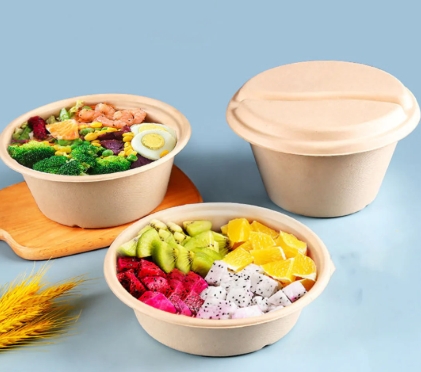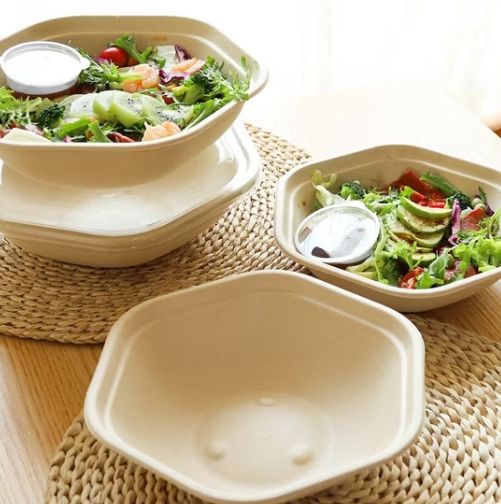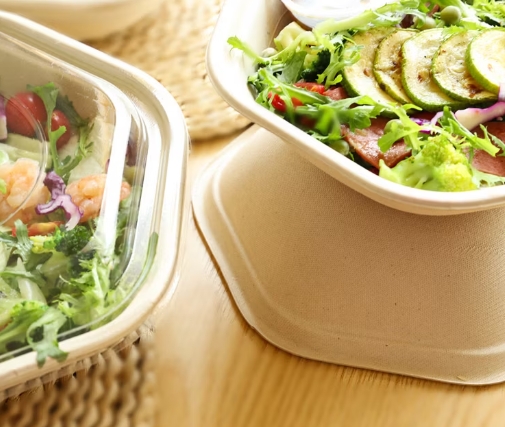
Content Menu
● The Environmental Impact of Traditional Bowl and Lid Packaging
>> Single-Use Plastics: A Persistent Challenge
>> Health and Ecosystem Risks
>> Waste Generation and Management Issues
● The Rise of Sustainable Alternatives
>> Paper, Bamboo, and Plant-Based Materials
>>> Key Benefits of Sustainable Materials
>> Innovations in Coatings and Barriers
>> Lifecycle and Carbon Footprint
● The Global Movement Toward Sustainable Packaging
>> Regulatory Drivers
>> Consumer Demand and Market Trends
>> The Circular Economy
● Challenges and Considerations
>> Performance and Cost
>> Recycling and Composting Infrastructure
>> Health and Safety Concerns
● Case Studies: Success Stories in Sustainable Bowl and Lid Packaging
>> Food Service Industry Transformation
>> Retail and Consumer Goods
● The Future of Bowl and Lid Packaging
>> Technological Advancements
>> Collaboration Across the Value Chain
>> Education and Awareness
● Conclusion
● FAQ
>> 1. What are the main environmental benefits of switching to sustainable bowl and lid packaging?
>> 2. Are compostable bowls and lids always better than recyclable ones?
>> 3. What challenges do businesses face when adopting sustainable bowl and lid packaging?
>> 4. How can consumers support the shift to eco-friendly bowl and lid packaging?
>> 5. What role do governments and regulations play in promoting sustainable packaging?
In today's world, environmental consciousness has become a driving force behind how individuals, businesses, and governments make decisions. Packaging, which was once considered a mere necessity for transporting and preserving products, is now a central topic in the global movement toward sustainability. Among the various types of packaging, bowl and lid solutions are especially significant due to their widespread use in food service, takeout, and retail. Their design, material choices, and end-of-life management are now closely scrutinized as society seeks to reduce ecological impact and promote responsible consumption.
This article explores the evolving landscape of bowl and lid packaging, examining its environmental implications, the innovations shaping its transformation, and its pivotal role in the broader context of the global environmental movement.

The Environmental Impact of Traditional Bowl and Lid Packaging
Single-Use Plastics: A Persistent Challenge
For decades, plastic has been the dominant material for bowl and lid packaging. Its popularity stems from its durability, versatility, and low cost. However, the environmental drawbacks of plastic packaging are significant. Plastics are made from non-renewable fossil fuels, require considerable energy to produce, and persist in the environment for hundreds of years. When not disposed of properly, plastic bowls and lids contribute to overflowing landfills, marine pollution, and the proliferation of microplastics, which threaten wildlife and ecosystems.
Health and Ecosystem Risks
Beyond their persistence in the environment, plastic bowls and lids can leach harmful chemicals into food and beverages, raising concerns about consumer health. In nature, these chemicals can disrupt aquatic and terrestrial ecosystems, compounding the negative effects of plastic pollution.
Waste Generation and Management Issues
Food packaging, including bowls and lids, makes up a substantial portion of municipal solid waste. Most plastic packaging is designed for single use and is rarely recycled due to contamination or inadequate infrastructure, further exacerbating the global waste crisis.
The Rise of Sustainable Alternatives
Paper, Bamboo, and Plant-Based Materials
In response to the environmental challenges posed by plastic, the packaging industry has seen a surge in sustainable alternatives. Materials such as paper, bamboo, and plant-based polymers are increasingly used to manufacture bowls and lids. These materials are renewable, biodegradable, and, in many cases, compostable, offering a stark contrast to the persistence of plastic waste.
Key Benefits of Sustainable Materials
- Biodegradability: Paper and bamboo bowls break down naturally, reducing the burden on landfills.
- Compostability: Many new products can be composted industrially, returning nutrients to the soil.
- Renewable Sourcing: Materials like bamboo and paper can be harvested sustainably, minimizing ecosystem disruption.
Innovations in Coatings and Barriers
One of the challenges with paper-based packaging is maintaining durability and resistance to moisture and grease. Recent innovations include water-based and plant-derived coatings, which enhance functionality without compromising compostability or recyclability.
Lifecycle and Carbon Footprint
Sustainable bowl and lid packaging often has a much lower carbon footprint compared to traditional plastic options. The production of kraft paper, for example, emits less carbon dioxide and relies on renewable resources. Compostable options also help mitigate methane emissions from landfill decomposition.
The Global Movement Toward Sustainable Packaging
Regulatory Drivers
Governments around the world are enacting policies to reduce single-use plastics and promote sustainable packaging. Bans, taxes, and extended producer responsibility laws are compelling manufacturers and retailers to innovate and adopt greener solutions.
Consumer Demand and Market Trends
Consumers are increasingly prioritizing sustainability when making purchasing decisions. Brands that embrace eco-friendly packaging not only reduce their environmental impact but also enhance their reputation and customer loyalty. The market for sustainable packaging is growing rapidly, with compostable and plant-based options leading the way in consumer preference.
The Circular Economy
The shift toward a circular economy is transforming packaging design and waste management. This model emphasizes the reuse, recycling, and composting of materials, aiming to keep resources in circulation and minimize environmental harm. Bowl and lid packaging designed for recyclability or compostability fits seamlessly into this vision, supporting a closed-loop system that reduces reliance on virgin materials and landfill space.
Challenges and Considerations
Performance and Cost
While sustainable bowls and lids offer clear environmental advantages, they must also meet performance standards for durability, heat resistance, and food safety. Innovations in coatings and materials are closing this gap, but cost remains a consideration. Sustainable options can be slightly more expensive, though lifecycle analyses often reveal long-term savings through reduced waste management fees and enhanced brand value.
Recycling and Composting Infrastructure
The effectiveness of sustainable packaging depends on the availability of appropriate recycling and composting facilities. In regions lacking such infrastructure, even compostable bowls may end up in landfills, limiting their environmental benefits. Building robust waste management systems is essential to realizing the full potential of eco-friendly packaging.
Health and Safety Concerns
Some compostable packaging has been found to contain substances that can persist in the environment and pose health risks. Ongoing research and regulation are needed to ensure that sustainable packaging is truly safe and non-toxic.

Case Studies: Success Stories in Sustainable Bowl and Lid Packaging
Food Service Industry Transformation
Major food delivery platforms and restaurant chains are transitioning to compostable or recyclable bowls and lids. These initiatives have led to measurable reductions in plastic waste and have set new industry standards for environmental responsibility.
Retail and Consumer Goods
Retailers are increasingly offering products in sustainable packaging, responding to consumer demand and regulatory pressure. This shift not only reduces waste but also educates consumers about the importance of responsible packaging choices.
The Future of Bowl and Lid Packaging
Technological Advancements
Emerging technologies, such as seaweed-based packaging and upcycled materials, are pushing the boundaries of sustainability in bowl and lid design. These innovations promise even greater reductions in environmental impact and resource use.
Collaboration Across the Value Chain
Achieving meaningful progress requires collaboration among manufacturers, retailers, policymakers, and consumers. By working together, stakeholders can drive innovation, improve infrastructure, and promote responsible consumption patterns.
Education and Awareness
Raising awareness about the environmental impact of packaging and the benefits of sustainable alternatives is crucial. Educational campaigns and clear labeling can empower consumers to make informed choices and support the global environmental movement.
Conclusion
Bowl and lid packaging, once a symbol of convenience, is now at the forefront of the global environmental movement. Through the adoption of sustainable materials, innovative design, and a commitment to circular economy principles, this everyday packaging solution is being transformed into a force for positive change. As regulations tighten, consumer preferences evolve, and technological advancements accelerate, the future of bowl and lid packaging is undeniably green.
The journey toward sustainability is ongoing, and challenges remain. However, the collective efforts of industry leaders, policymakers, and consumers are driving progress. By embracing eco-friendly bowl and lid packaging, society takes a significant step toward reducing waste, conserving resources, and safeguarding the planet for future generations.

FAQ
1. What are the main environmental benefits of switching to sustainable bowl and lid packaging?
Sustainable bowl and lid packaging, made from materials like paper, bamboo, or plant-based polymers, reduces reliance on fossil fuels, decreases landfill waste, and minimizes the release of harmful chemicals into the environment. These materials are often biodegradable or compostable, supporting a circular economy and contributing to a cleaner planet.
2. Are compostable bowls and lids always better than recyclable ones?
Compostable bowls and lids offer significant benefits when industrial composting facilities are available. However, in areas lacking such infrastructure, recyclable options may be more effective. The best choice depends on local waste management capabilities and consumer behavior.
3. What challenges do businesses face when adopting sustainable bowl and lid packaging?
Businesses may encounter higher initial costs, performance limitations, and supply chain adjustments. Additionally, ensuring that packaging is disposed of correctly—recycled or composted—requires consumer education and robust waste management systems.
4. How can consumers support the shift to eco-friendly bowl and lid packaging?
Consumers can support sustainability by choosing products with eco-friendly packaging, properly sorting waste, and advocating for improved recycling and composting infrastructure in their communities. Making informed purchasing decisions encourages businesses to prioritize sustainable options.
5. What role do governments and regulations play in promoting sustainable packaging?
Governments influence the adoption of sustainable packaging through bans on single-use plastics, incentives for eco-friendly materials, and extended producer responsibility laws. These regulations drive innovation and encourage businesses to invest in greener solutions, accelerating the global transition to sustainable packaging.

















